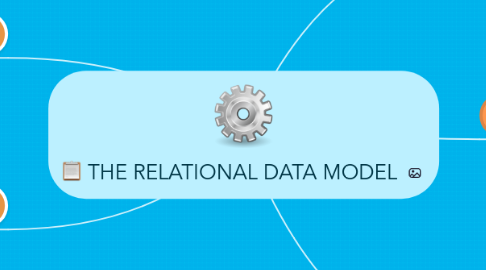
1. CHARACTERISTICS OF TABLE
1.1. Each table row (tuple) represent a single entity occurence within the entity set
1.2. Each table colomn represent an attribute and each column has a distinct name
1.3. Each column represent a single data value
2. TYPES OF RELATIONSHIP
2.1. 1:M Relationship
2.1.1. Should be norm in any relational database dessign
2.2. 1:1 Relationship
2.2.1. Should be rare in any relational database design
2.3. M:N Relationship
2.3.1. Cannot be implemented as such in the relational model
2.3.2. Relationship can be changed into 1:M relationship
3. Integrity Rules
3.1. Entity Integrity
3.1.1. all primary keys are unique and cannot be null
3.1.2. foreign key value refer to primary key value
3.2. Reference Integrity
3.2.1. foreign key can be null
3.2.2. must refer to existing primary key
4. Keys
4.1. Composite Key
4.1.1. compose more than one attributes
4.2. Key Attribute
4.2.1. any attributes that is part of key
4.3. Superkey
4.3.1. any key that uniqely identifies each row
4.4. Candidate Key
4.4.1. a superkey without any unnecessary attributes
4.5. Primary Key
4.5.1. a candidate key selected to uniquely identify all other attribute values in any given entity
4.6. Foreign Key
4.6.1. an attribute in one table whose values must match the primary key in another table
5. Relational Set Operators
5.1. Natural Join
5.1.1. Links tables by selecting rows with common values in common attribute(s)
5.2. Equijoin
5.2.1. Links tables on the basis of an equality condition that compares specified columns
5.3. Theta join
5.3.1. Any other comparison operator is used
5.4. Outer join
5.4.1. Matched pairs are retained, and any unmatched values in other table are left null
